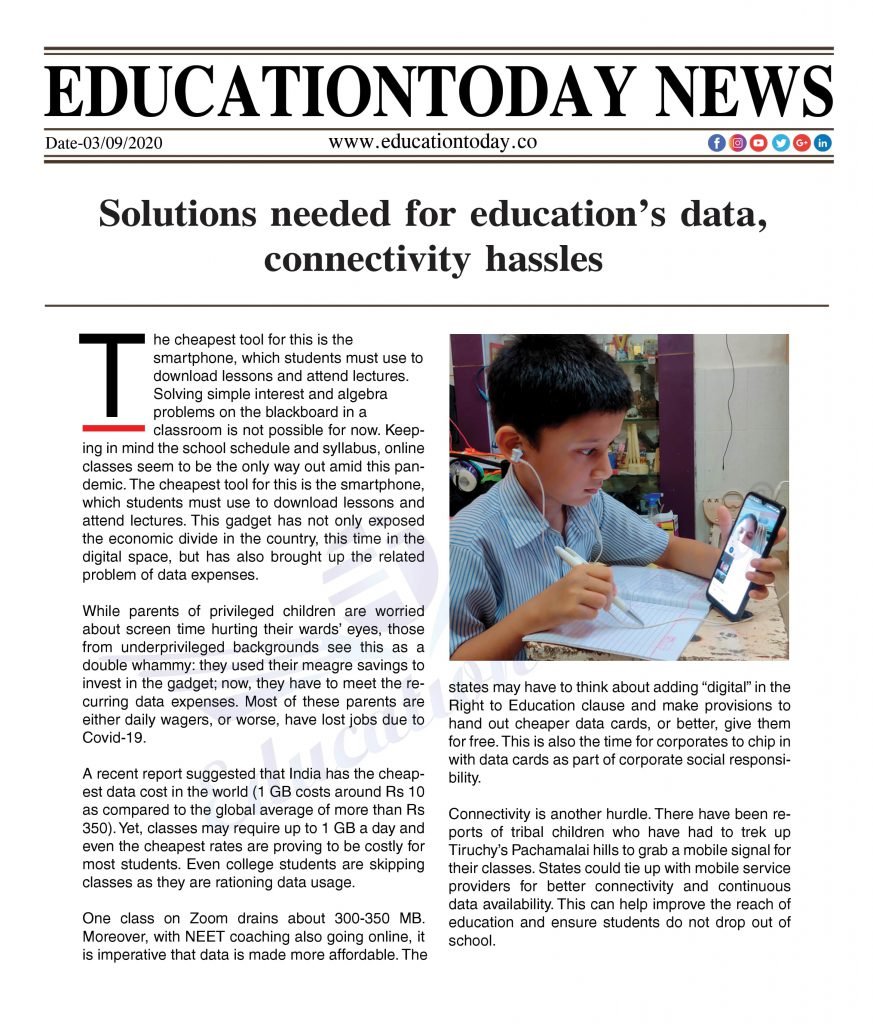Solutions needed for education’s data, connectivity hassles
The cheapest tool for this is the smartphone, which students must use to download lessons and attend lectures.

Solving simple interest and algebra problems on the blackboard in a classroom is not possible for now. Keeping in mind the school schedule and syllabus, online classes seem to be the only way out amid this pandemic. The cheapest tool for this is the smartphone, which students must use to download lessons and attend lectures. This gadget has not only exposed the economic divide in the country, this time in the digital space, but has also brought up the related problem of data expenses.
While parents of privileged children are worried about screen time hurting their wards’ eyes, those from underprivileged backgrounds see this as a double whammy: they used their meagre savings to invest in the gadget; now, they have to meet the recurring data expenses. Most of these parents are either daily wagers, or worse, have lost jobs due to Covid-19.
A recent report suggested that India has the cheapest data cost in the world (1 GB costs around Rs 10 as compared to the global average of more than Rs 350). Yet, classes may require up to 1 GB a day and even the cheapest rates are proving to be costly for most students. Even college students are skipping classes as they are rationing data usage.
One class on Zoom drains about 300-350 MB. Moreover, with NEET coaching also going online, it is imperative that data is made more affordable. The states may have to think about adding “digital” in the Right to Education clause and make provisions to hand out cheaper data cards, or better, give them for free. This is also the time for corporates to chip in with data cards as part of corporate social responsibility.
Connectivity is another hurdle. There have been reports of tribal children who have had to trek up Tiruchy’s Pachamalai hills to grab a mobile signal for their classes. States could tie up with mobile service providers for better connectivity and continuous data availability. This can help improve the reach of education and ensure students do not drop out of school.

336,417 total views



